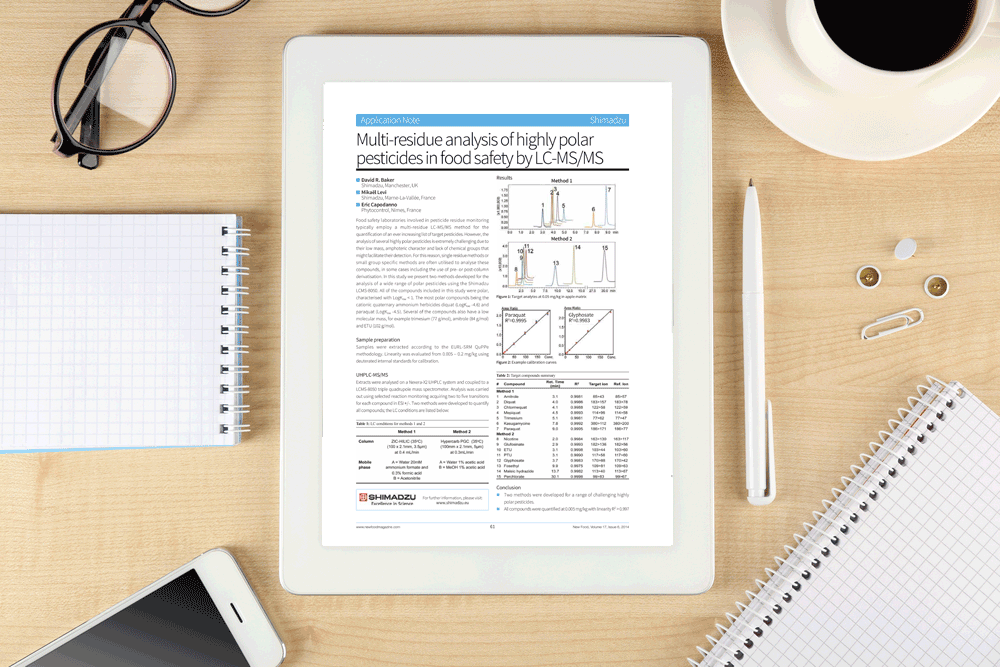Multi-residue analysis of highly polar pesticides in food safety by LC-MS/MS
- Like
- Digg
- Del
- Tumblr
- VKontakte
- Buffer
- Love This
- Odnoklassniki
- Meneame
- Blogger
- Amazon
- Yahoo Mail
- Gmail
- AOL
- Newsvine
- HackerNews
- Evernote
- MySpace
- Mail.ru
- Viadeo
- Line
- Comments
- Yummly
- SMS
- Viber
- Telegram
- Subscribe
- Skype
- Facebook Messenger
- Kakao
- LiveJournal
- Yammer
- Edgar
- Fintel
- Mix
- Instapaper
- Copy Link
Food safety laboratories involved in pesticide residue monitoring typically employ a multi-residue LC-MS/MS method for the quantification of an ever increasing list of target pesticides. In this study we present two methods developed for the analysis of a wide range of polar pesticides using the Shimadzu LCMS-8050…
Food safety laboratories involved in pesticide residue monitoring typically employ a multi-residue LC-MS/MS method for the quantification of an ever increasing list of target pesticides. However, the analysis of several highly polar pesticides is extremely challenging due to their low mass, amphoteric character and lack of chemical groups that might facilitate their detection. For this reason, single residue methods or small group specific methods are often utilised to analyse these compounds, in some cases including the use of pre- or post-column derivatisation.
In this study we present two methods developed for the analysis of a wide range of polar pesticides using the Shimadzu LCMS-8050. All of the compounds included in this study were polar, characterised with LogKow < 1. The most polar compounds being the cationic quaternary ammonium herbicides diquat (LogKow -4.6) and paraquat (LogKow -4.5). Several of the compounds also have a low molecular mass, for example trimesium (77 g/mol), amitrole (84 g/mol) and ETU (102 g/mol).
This application note is restricted - login or subscribe free to access


Why subscribe? Join our growing community of thousands of industry professionals and gain access to:
- bi-monthly issues in print and/or digital format
- case studies, whitepapers, webinars and industry-leading content
- breaking news and features
- our extensive online archive of thousands of articles and years of past issues
- ...And it's all free!
Click here to Subscribe today Login here
Related content from this organisation
Related topics
Liquid chromatography–mass spectrometry (LC-MS), Pesticides, Spectroscopy









wonderful